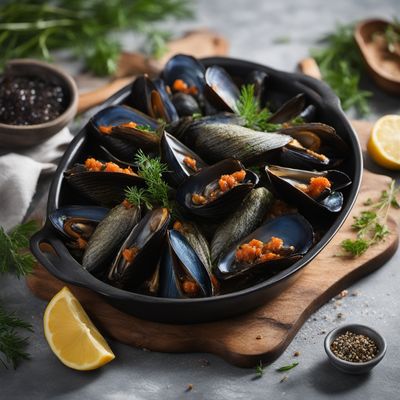
Ingredient
Fine dough without yeast
Versatile No-Yeast Dough
Fine dough without yeast is a basic dough made with flour, water, fat, and salt. Unlike traditional yeast dough, it does not require any rising time, making it a quick and convenient option for homemade breads, pastries, and flatbreads. The texture of the dough can vary depending on the fat used, resulting in a range of flaky, tender, or crispy finished products. This versatile dough can be shaped, filled, or topped with various ingredients to create a wide array of delicious treats.
Origins and history
Unleavened dough has been used for centuries in different cultures around the world. It has its roots in ancient civilizations where leavening agents like yeast were not readily available. Unleavened bread, made with fine dough without yeast, has religious and cultural significance in many traditions, such as Jewish matzo and Indian chapati. This type of dough is also commonly used in Mediterranean and Middle Eastern cuisines for dishes like pita bread and flatbreads. Today, fine dough without yeast continues to be a popular choice for those seeking quick and easy homemade bread and pastries.
Nutritional information
Fine dough without yeast is low in sugar and can be a good source of carbohydrates. The nutritional content may vary depending on the specific recipe and ingredients used.
Allergens
There are no known allergens associated with fine dough without yeast.
How to select
When selecting fine dough without yeast, look for a recipe that suits your desired end product. Consider the type of fat used, such as butter, margarine, or vegetable oil, as it will affect the texture and flavor of the dough. Additionally, choose a recipe that provides clear instructions on how to achieve the desired texture, whether it be flaky, tender, or crispy. Follow the recipe closely and use high-quality ingredients for the best results.
Storage recommendations
To store fine dough without yeast, wrap it tightly in plastic wrap or place it in an airtight container to prevent it from drying out. Store in the refrigerator for up to three days. If you need to store it for a longer period, freeze the dough by wrapping it in plastic wrap and placing it in a freezer-safe bag or container. Frozen dough can be stored for up to three months. Thaw the dough in the refrigerator overnight before using it.
How to produce
Fine dough without yeast can be easily made at home with basic pantry staples. There are numerous recipes available online or in cookbooks that provide step-by-step instructions. Experiment with different fats, such as butter or vegetable oil, to achieve the desired texture and flavor. The dough can be mixed by hand or using a stand mixer with a dough hook attachment. Once the dough is prepared, it can be shaped, filled, or topped according to the desired recipe.
Preparation tips
Fine dough without yeast can be used to make a variety of baked goods. It can be shaped into rolls, buns, or loaves for sandwiches or served as a side with soups and stews. The dough can also be used to make pastries like turnovers, empanadas, or hand pies. For a savory option, top the dough with ingredients like cheese, vegetables, or meats to create delicious flatbreads or pizzas. Sweet variations can include fillings like fruit, chocolate, or nuts. The possibilities are endless with this versatile dough.
Culinary uses
Fine dough without yeast is commonly used in various cuisines around the world. It is a staple in Mediterranean and Middle Eastern cuisines, where it is used to make pita bread, flatbreads, and pastries like baklava. Unleavened dough is also a key component of Jewish cuisine, particularly during Passover when leavened bread is prohibited. It can be found in grocery stores, bakeries, and can be easily made at home.
Availability
Mediterranean, Middle Eastern, Jewish cuisine


